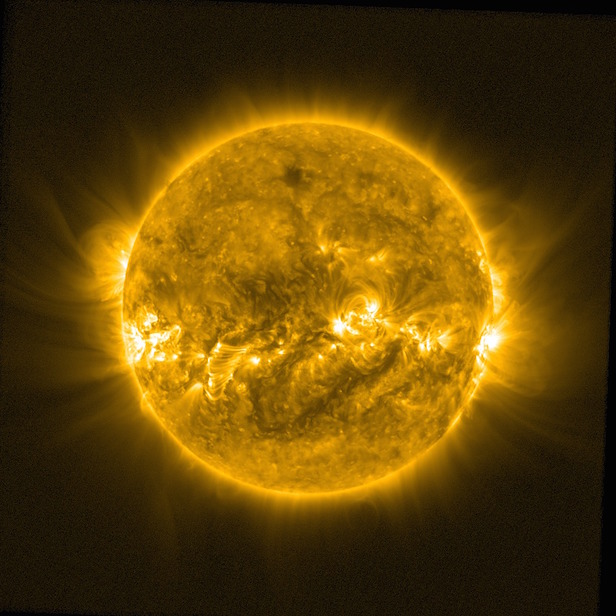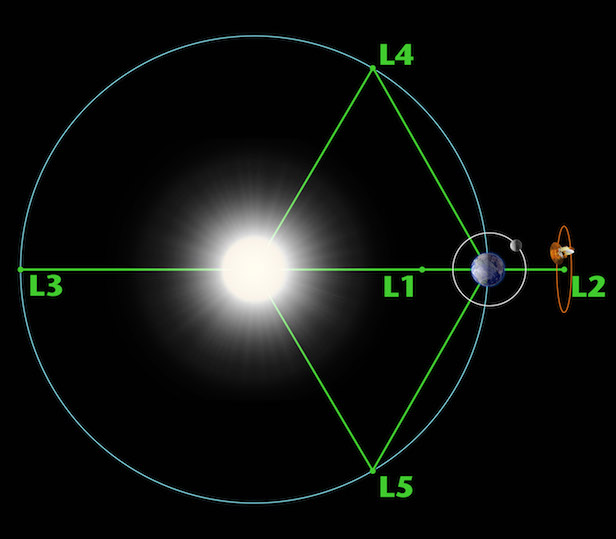Preparing the spacecraft to monitor space weather
The European Space Agency aim to construct a spacecraft that will warn us about perilous incoming solar activity

Coronal mass ejections are packed full of highly energetic particles that permeate the solar system. Image credit: ESA/ROB
The Sun is an unpredictable, powerful and dangerous entity, which can eject material without warning in the form of coronal mass ejections. These ejections are extremely powerful and can be hazardous for humans and manmade infrastructures in space. This is why the European Space Agency (ESA) plans to put a spacecraft at a fixed position in Earth’s orbit to watch out for such events. Three out of the four teams are preparing to develop the appropriate instruments and platforms for the spacecraft are in the United Kingdom.
“This project has the potential for UK space and engineering expertise to help ensure vital communications, navigation and power networks are protected, and is a great example of what we can achieve through continued scientific collaboration with our European partners,” says Sam Gyimah, science minister. “As set out in the Industrial Strategy, the UK’s space sector is going from strength to strength, boosting the economy, employing around 40,000 people and developing innovative services with a global impact.”
The spacecraft will be placed in an orbital car-parking space 60 degrees behind Earth in its orbit around the Sun, also known as the fifth Lagrange point. Whilst it’s parked up there, it will monitor any disturbances in our space environment, also referred to as ‘space weather’.
Airbus UK will lead the overall development of the project, but it will focus on mission operations, the spacecraft platform and how this interfaces with the instruments. Matt Perren, Head of Future Projects at Airbus UK, says, ““a mission to the 5th Lagrange point will significantly enhance our capability to protect our planet against space hazards. We are excited to make available Airbus’ experience as leader of cutting edge solar observation and Lagrangian missions to support ESA and the UK Space Agency in strengthening the resilience of our valuable assets in space and on Earth.”

Each Lagrange point is a fixed position where the gravitational forces of the Sun and the Earth balance out. Image credit: NASA/WMAP Science Team
UCL Mullard Space Science Laboratory will lead the development of instruments to conduct the important measurements of the solar winds. Dr Richard Cole, responsible for managing the study contract at UCL, says, “UCL has a long track-record in the science of space weather and in building instruments to investigate it. I am very pleased that UCL is able to lead a team of European institutes in developing this important mission that will help us develop an early warning system for space weather and better predict its harmful effects on both ground- and space-based technologies – something we’ve never been able to achieve before.”
STFC RAL Space will lead the development of instruments capable of observing the Sun and its heliosphere. Dr Jackie Davies, Consortium Lead for the study at STFC’s RAL Space, says, “This mission is a fantastic opportunity to apply the extensive scientific and space instrument expertise and heritage here in STFC RAL Space to a growing societal problem. We have been advocates for such a space weather mission over many years, based on RAL Space’s leadership of the pioneering Heliospheric Imager instruments on NASA’s flagship STEREO mission. It is extremely satisfying to achieve this goal and we are now looking forward to the challenge of leading a multi-instrument, multi-national instrumentation development programme.”
The fourth constituent is OHB from Germany, and their aim is to develop a competing platform. All these proposals will be assessed by ESA before the mission goes any further. It is important to focus on monitoring space weather because of our increased reliance upon modern technology. A recent ESA study has estimated that if a single, extremely powerful, space weather event hit Earth, the potential socio-economic damage could cost around £13.3 billion ($18.7 billion). The final design for the spacecraft and its instruments will be based on the results of these studies, and will come to its conclusion within about 18 months.
Keep up to date with the latest reviews in All About Space – available every month for just £4.99. Alternatively you can subscribe here for a fraction of the price!




